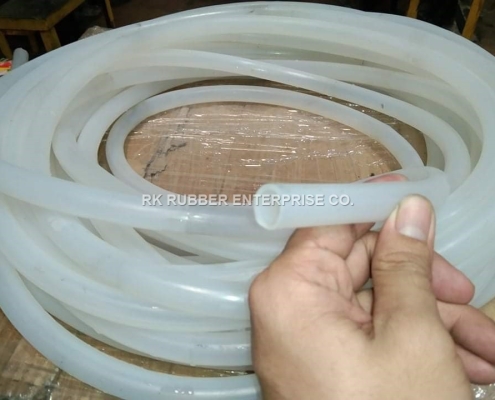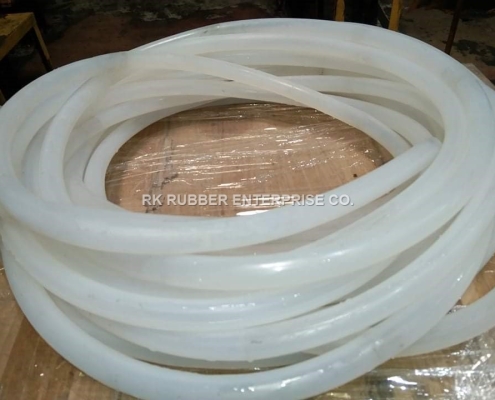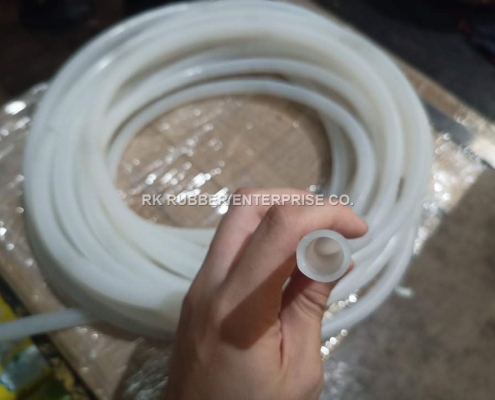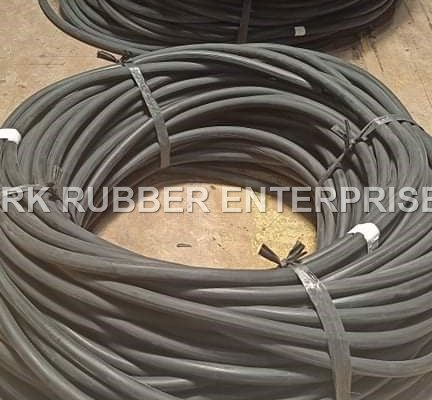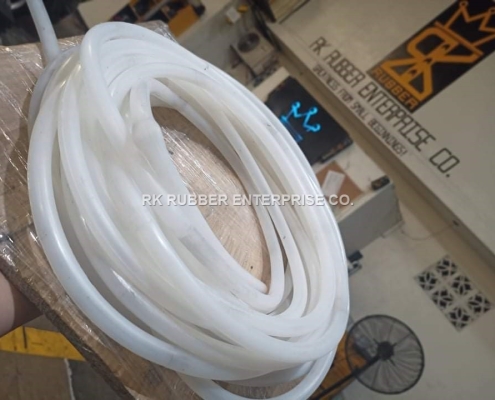Silicone Hose
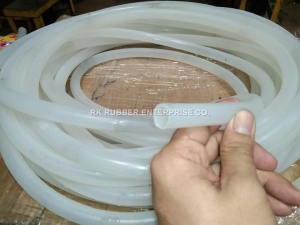 A silicone hose is composed of silicone material instead of rubber or PVC. One reason for using a silicone hose is to avoid having a hose that emits toxic fumes from the vapors released from any fluid transported by the hose. Silicone can also withstand temperatures up to 280°C, which means it can go in higher temperature environments than most other materials.
A silicone hose is composed of silicone material instead of rubber or PVC. One reason for using a silicone hose is to avoid having a hose that emits toxic fumes from the vapors released from any fluid transported by the hose. Silicone can also withstand temperatures up to 280°C, which means it can go in higher temperature environments than most other materials.
It can be an incredibly versatile product for many applications. It is available in various sizes, colors, and grades, perfect for any project. The silicon is not only durable but also flexible. In addition to its durability and flexibility, silicone does not have a chemical odor or taste that can harm or contaminate the end consumer’s food products.
It is often used as a coolant hose for engines and transmissions in the automotive industry. Other uses include:
- Fuel hoses.
- Precision airlines for medical devices.
- Water hoses for lawn sprinklers.
Temperature Resistance: Withstands High Heat
Temperature resistance is essential in many industrial processes, and silicone hose is increasingly used as a reliable material for components exposed to extreme temperatures. Silicone hose offers excellent insulating capabilities, allowing for the safe transfer of hot and cold liquids without compromising efficiency. This makes it popular for applications such as vehicle radiators, chemical processing lines, and oilfield operations. Silicone hose also has excellent temperature resistance properties that can withstand extreme heat up to 500°F (260°C).
Additionally, its flexibility allows it to be used in tight spaces without losing its performance or durability. Its lightweight construction also adds to the convenience of installation and use. Coupled with its high strength-to-weight ratio, silicone hose is a practical material design choice across various industries and applications.
Chemical Resistance: Durability and Safety
Silicone hoses are one of the most popular and reliable products used in industrial laboratories, factories, and manufacturing plants to transport chemicals easily. The hose’s durability and chemical resistance make it a safe option for containing corrosive materials.
Silicone is a synthetic rubber with excellent resistance to extreme temperatures, ozone, oxidation, radiation, and most chemicals. This makes it ideal for transporting hazardous materials over long distances without risk of corrosion or contamination. Its flexible design also allows it to be easily installed in hard-to-reach areas, which adds to its value as a product for chemical transportation.
Flexibility: Adapts to Many Applications
Silicone hoses are versatile products that can be used in various applications due to their flexibility. Its ability to adapt and fit into various shapes makes it an ideal solution for many industries and uses. The elasticity of silicone hose makes it incredibly resilient, allowing it to flex and bend without losing any performance or capability. The same silicone hose can easily be used in multiple scenarios, making it an efficient product. High-temperature resistance is another feature of silicone hose, allowing it to withstand extreme temperatures while maintaining its integrity and shape.
This unique flexibility, versatility, and resilience make silicone hoses an excellent choice for commercial and industrial settings. From automotive parts to medical equipment, silicone hoses have been proven to effectively transfer fluids safely between two points with the utmost security.
Cost Considerations: Affordable Material
When finding a cost-effective and affordable material for your projects, silicone hose is an excellent option. This material is used in applications ranging from food processing to automotive engineering, and it offers plenty of advantages compared to other materials. Not only does silicone hose come at a fraction of the cost of different materials, but it also provides high-quality performance that you can trust.
Due to its flexibility and durability, silicone hose has become a popular choice for many businesses. It can easily handle extreme hot and cold temperatures, making it ideal for applications where these variations are likely to occur. Furthermore, its flexibility makes installation more effortless than ever, as no complicated pieces or tools are needed. The low maintenance requirements make this material even more appealing, as you don’t have to worry about spending extra time or money on repairs.
Benefits of Silicone Hoses
These benefits make silicone hoses an excellent alternative for businesses that need durable, long-lasting equipment.
- Flexible and have a long life span.
- They are resistant to ultraviolet light and ozone damage, which emit no gases or smelly odor.
- It is lightweight, which makes them easy to handle.
- They do not contain any chemicals that may be harmful to the environment.
- Silicone hoses are a significant improvement over the standard rubber hose. They offer increased resilience.
- Has excellent resistance to abrasion
- Handle high temperatures better than rubber hoses.
- It has a longer lifespan and is less likely to leak.
How to Correctly Install Silicone Hoses
To be safe, always install a silicone hose correctly.
- Begin by disconnecting the old silicone hose from the faucet that needs a new one.
- Next, cut off any excess length to leave around 8 inches of extra hose on either side.
- Push the strain relief over the end of the hose and fix it in place with the metal band and tighten it so it cannot move back and forth.
How to Identify if Your Hose is Faulty
Silicone hoses are used in various products and equipment, such as washing machines and other water equipment. The hose, generally made from either rubber or silicone, can malfunction due to wear and tear. There are three indicators that you may need to replace your hose:
- Water pressure loss
- Leakage
- Change in color
Contact a service center immediately if you notice any of these signs.
Conclusion
In conclusion, silicone hoses are a more advantageous option than rubber hoses in many different scenarios, especially within the pharmaceutical sector. They are more durable due to their resistance to extreme temperatures and chemicals and are much easier to install and replace. They offer superior flexibility, making them perfect for complex connections, and they provide excellent insulation properties against sound and vibration. Furthermore, they do not degrade over time like rubber hoses do, offering an improved performance life expectancy.
Below are some of the actual products and applications.

